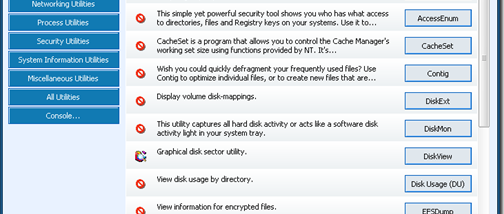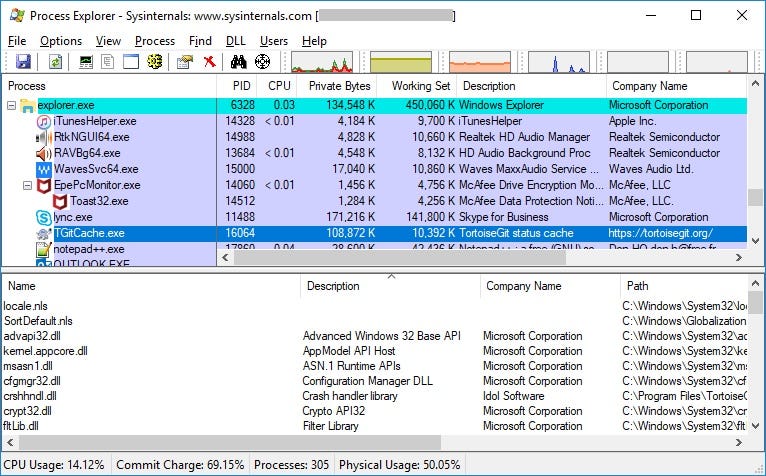

- #HOW TO USE SYSINTERNALS SUITE PASSWORD#
- #HOW TO USE SYSINTERNALS SUITE PC#
- #HOW TO USE SYSINTERNALS SUITE DOWNLOAD#
- #HOW TO USE SYSINTERNALS SUITE WINDOWS#
#HOW TO USE SYSINTERNALS SUITE WINDOWS#
The database actually describes partitioning of the Windows 2000 disks. It lets you dump the contents of the Logical manager (it’s database actually). If you are looking for Win2K NTFS symbolic links, Junction can be used to create the same. This utility lets you know that what files are opened by which processes and a little bit more. This shows information related to all the encrypted files on the system. Using this Sysinternals utility you can easily check that which directory has been taking how much of the system’s space. Just double click any cluster to check the space distributions and consumption. DiskViewĭiskView displays clusters on the hard drive in the form of visual representations. Just click the icon and it will show you a detailed report on all the drive activities. It stores all the drive activities and is displayed as an activity light in the system tray. This application lets you see volume disk-mappings like what has been taking how much power, data and most importantly the output.
#HOW TO USE SYSINTERNALS SUITE PC#
It runs online to create these virtual drives which can be saved locally on your PC or your current drive. This utility creates a virtual hard drive from your physical hard drive. Moreover, this lets you use a tray interface and hot keys to see what’s running on these desktops so as to quickly switch between them. Using this utility, you can create up to 4 virtual desktops. With this utility you have the power to create new files and optimize the individual ones. This utility helps to defragment frequently used files to boost up their execution time. The minimum and maximum size limits put a constraint to adjust the overall size. CacheSetĬacheSet lets you change the size of your cache and reset them to the default entries at a single click. This will create a fresh background image showing all the relevant data. Simply select the fields you want to see on your desktop and click Apply.


You can anytime change the style, font or color of the data to look more attractive. It automatically generates catchy desktop backgrounds which include all this information in the systematized format. If you want information regarding your IP address, computer name, network adapters, etc. It stores your data into a safe location for easy retrieval during crucial moments. Activating this bypasses the login screen which saves the quality time.
#HOW TO USE SYSINTERNALS SUITE PASSWORD#
If you want to bypass the password screen, Autologon is the perfect utility for you. This tool lets you check all the deleted domains to restore them when needed. This process takes a lot of time as it needs you to manually check folder’s permission one by one. You can easily check holes in your permissions using this utility. This tool lets you check all the security permissions assigned to different files, directories, registry keys, etc. This is a console program/command-line utility which allows you view all the running permissions on services, processes, registry keys, files, kernel objects, and so on. Here we are providing introduction of few of the Sysinternals Tools. Step 2 – As you will extract the file you will get entire tools in the folder.
#HOW TO USE SYSINTERNALS SUITE DOWNLOAD#
If you are on Nano server the click on the second option as Download Sysinternals Suite for Nano Server (4.6 MB). Step 1 – Go to this link and click on Download Sysinternals Suite (21.3 MB). Download Sysinternals Tools in a Single file


 0 kommentar(er)
0 kommentar(er)
